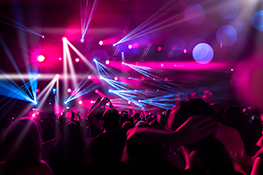A Guide to Stage Lighting Design and Putting on a Stellar Show
Stage lighting is a powerful tool that can transform a performance from ordinary to extraordinary. It can set the mood, highlight key moments, and create a captivating visual experience for your audience. But with so many different types of lights and techniques, it can be overwhelming to know where to start.
This guide will walk you through the fundamentals of stage lighting design, from understanding the basics to crafting a visually stunning and impactful show.
Understanding the Basics
Types of Stage Lights
Stage lighting encompasses a wide array of fixtures, each serving a specific purpose. Here are some common types:
- Spotlights: These lights create a focused beam of light, ideal for highlighting actors, dancers, or specific objects.
- Floodlights: Floodlights provide a wide, even wash of light, perfect for illuminating larger areas or backdrops.
- Fresnels: Fresnel lenses produce a soft, even light with a variable beam spread, often used for general illumination and creating dramatic shadows.
- Ellipsoidal Reflector Spotlights (ERLs): ERLs offer precise control over beam shape and size, making them excellent for shaping light and creating effects.
- Parabolic Aluminized Reflector (PAR) Cans: PAR cans are versatile and affordable, offering a range of beam angles and colors.
- LED Lights: Energy-efficient and long-lasting, LED lights are becoming increasingly popular for their color versatility and brightness.
Color Temperature and Color Mixing
Color temperature is measured in Kelvin (K) and describes the warmth or coolness of a light source. Warm colors (lower K) like amber and red create a cozy or intimate atmosphere, while cool colors (higher K) like blue and white evoke feelings of energy and clarity.
Color mixing allows you to blend different colors of light to achieve specific effects. Gel filters, colored glass sheets, and LED fixtures with customizable color palettes are commonly used for color mixing.
Light Intensity and Control
Light intensity, measured in lumens or foot-candles, determines how bright a light source is. Dimmers and controllers allow you to adjust the brightness of lights throughout a performance, creating dynamic and impactful lighting cues.
Designing a Stage Lighting Plan
1. Determine the Show’s Needs
Before you start designing, consider the type of performance, its mood, and the overall visual aesthetic you want to achieve. Is it a dramatic play, a musical, a comedy, or a dance show?
2. Sketch a Lighting Plot
A lighting plot is a diagram showing the placement and type of each light fixture on stage. This visual representation helps you plan the lighting scheme and avoid any potential conflicts or overlaps.
3. Consider the Audience Perspective
Think about where the audience will be sitting and how the lights will appear from their vantage point. Avoid blinding the audience or creating excessive shadows.
4. Highlight Key Elements
Use spotlights and strategically placed lights to highlight actors, props, and important areas on stage. This focuses attention and creates a sense of drama.
5. Use Light to Create Atmosphere
Light can be used to create a sense of time, place, and emotion. For example, warm, amber lighting can evoke a sense of nostalgia, while cool, blue lighting can create a sense of tension or mystery.
6. Utilize Light for Transitions
Smooth transitions between lighting cues can enhance the flow of a performance. Use dimmers to create gradual changes in light intensity, or employ special effects like cross-fades or chases to create dynamic lighting transitions.
7. Practice and Refine
It is crucial to practice your lighting design before the actual show to fine-tune the cues and ensure everything works smoothly. Experiment with different lighting setups, colors, and effects to achieve the desired results.
Lighting Equipment and Accessories
Investing in high-quality lighting equipment and accessories is essential for professional-looking results. Stagelights.in offers a wide range of products, including:
- Stage lights: Spotlights, floodlights, Fresnels, ERLs, and more.
- Dimmers and controllers: Analog, digital, and DMX-controlled options.
- Gel filters: A variety of colors and textures to enhance your lighting scheme.
- Lighting stands and mounting hardware: Securely position and angle your lights.
- Cables and connectors: Reliable connections for power and control.
Tips for Stellar Stage Lighting
- Balance light and shadow: Avoid over-illuminating the stage; use shadows strategically to create depth and dimension.
- Use color to create emotions: Red for passion, blue for melancholy, green for serenity – use color to enhance the emotional impact of your show.
- Practice safety: Always handle lights with care and follow safety guidelines to prevent accidents or equipment damage.
- Consider the budget: Choose lighting equipment that meets your needs and budget, balancing performance quality with affordability.
- Don’t be afraid to experiment: Explore different lighting techniques and effects to find what works best for your show.
Contact Stagelights.in for Your Lighting Needs
Whether you’re a professional lighting designer or just starting out, Stagelights.in has the expertise and equipment to help you bring your vision to life. We offer:
- Comprehensive product selection
- Expert technical support
- Competitive pricing
- Fast and reliable shipping
Contact us today to discuss your stage lighting needs and get a free consultation.
Contact Information
Phone: 1800 200 6000, +91 90150 60000
Email: info@stagelights.in


 Auditorium Construction Services
Auditorium Construction Services 